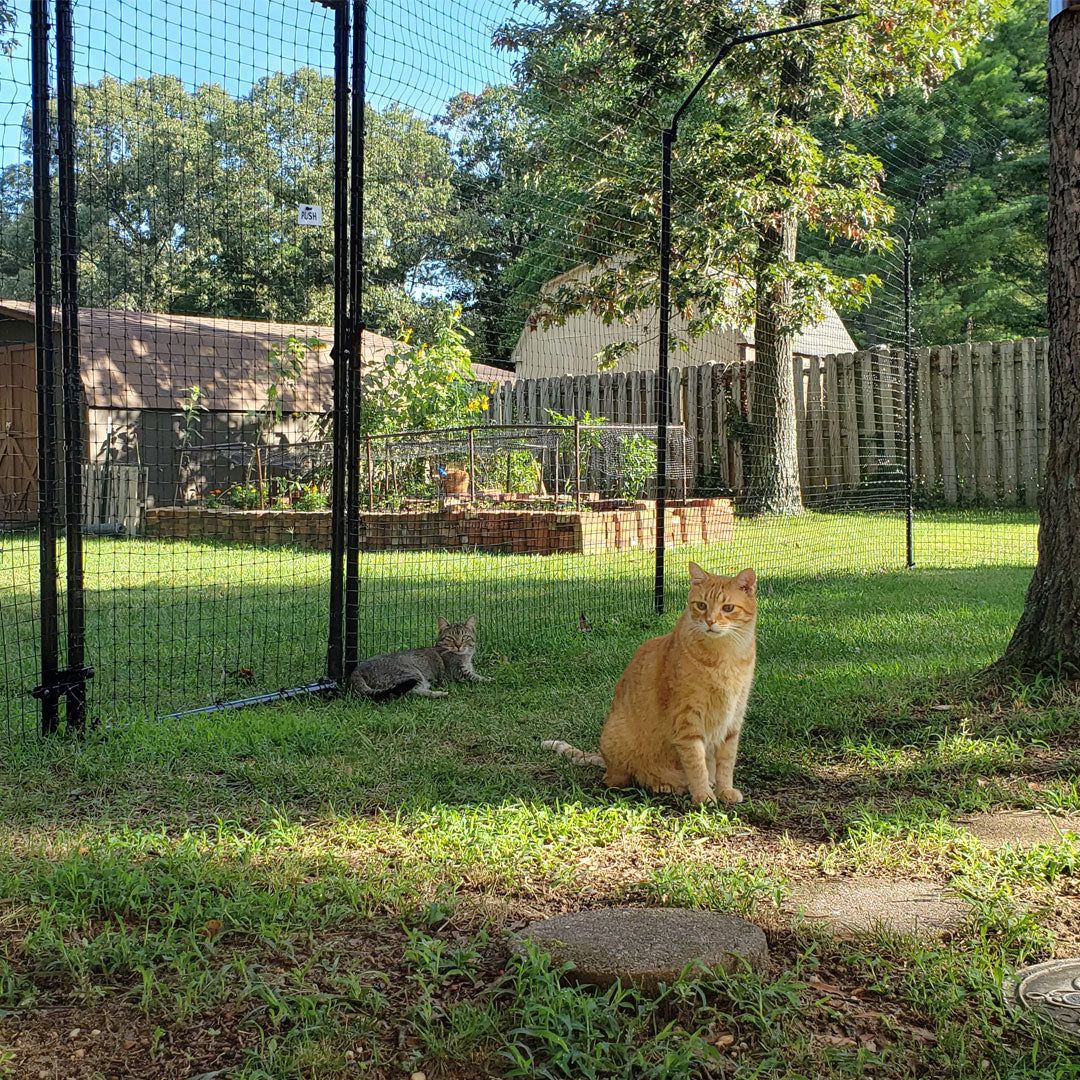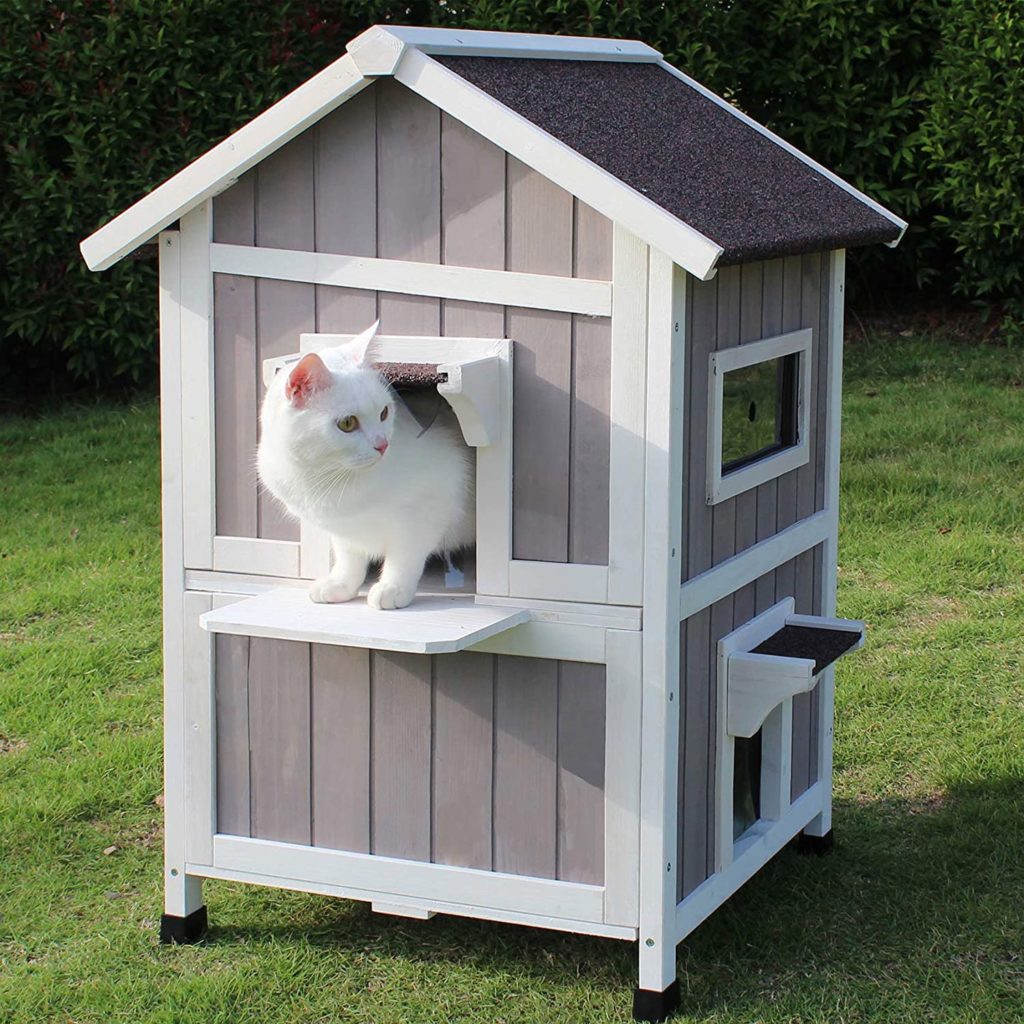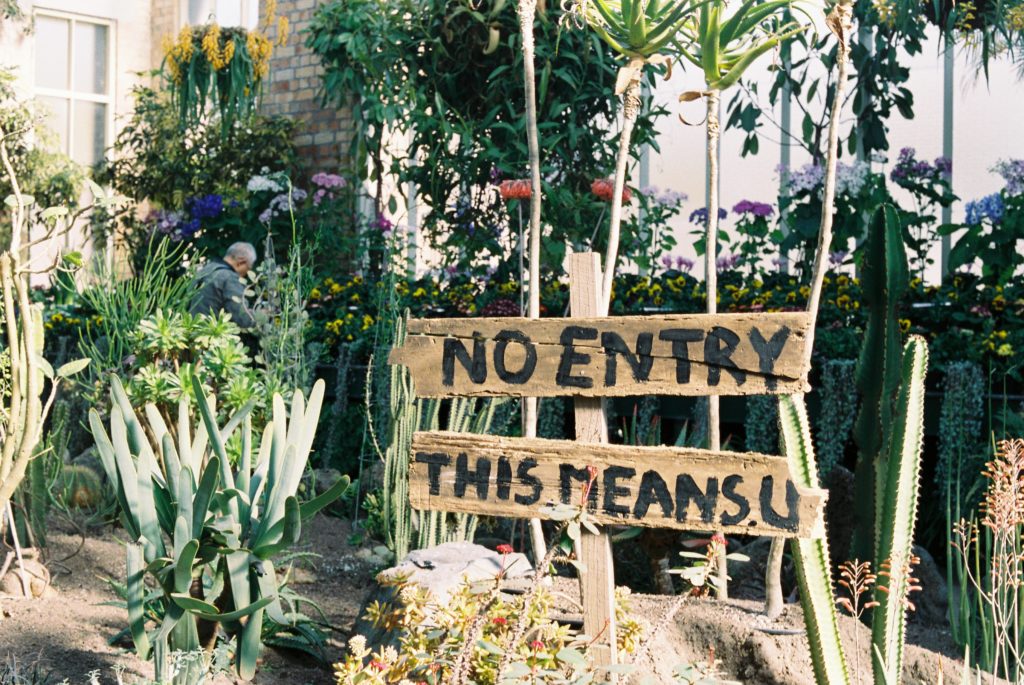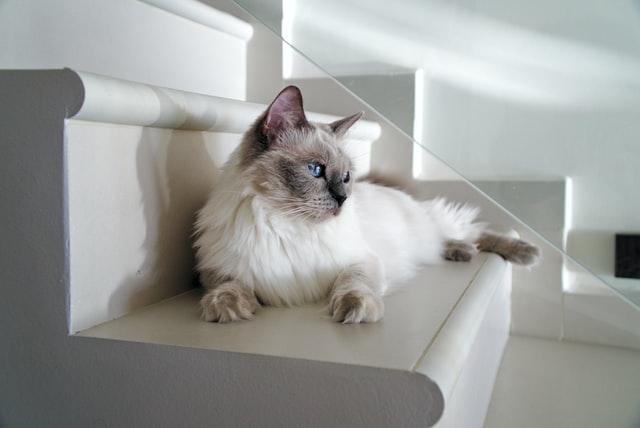If you’re looking at cat proofing a fence in a garden or yard, in this ultimate guide you’ll discover the main methods and techniques you can employ to keep your feline safe.
According to Dr Yuki Hattori in his book, What Cats Want, outdoor cats have a shorter life expectancy than their indoor counterparts owing to the various dangers they may encounter in the outside world.
The question is: how can you give your cat the benefits of an outdoor experience whilst significantly reducing the chances of anything untoward happening?
That’s where this ultimate guide to cat proofing fences can help…
What You Will Learn
- The main reasons as to why you should consider cat proofing your garden or yard
- How to cat proof an existing fence
- Which free standing cat proofing options are available
Reasons To Cat Proof A Fence
Cat-proofing a fence is a prudent measure undertaken by cat owners for various reasons, all centered around ensuring the safety and well-being of their feline companions.
The main reasons to cat-proof a fence include:
Preventing Escapes:
Cats are known for their agility and climbing skills. Cat-proofing a fence helps prevent escapes, reducing the risk of cats wandering into potentially dangerous areas, such as busy streets or neighbouring properties.
Protection from Predators:
A cat-proof fence acts as a barrier against potential predators, such as dogs, wildlife, or other outdoor threats. This helps create a secure space for cats to explore without the fear of encountering harm.
Minimising Risks of Accidents:
Unrestricted outdoor access can expose cats to various hazards, including traffic accidents, toxic plants, or other environmental dangers. Cat-proofing a fence mitigates these risks.
Preventing Conflicts with Other Animals:
Cat-proofing helps avoid territorial disputes and conflicts with other animals, including neighbouring outdoor cats. This can reduce the likelihood of injuries or the transmission of diseases.
Compliance with Local Regulations:
In some areas, there may be local regulations or ordinances that require pet owners to prevent their cats from roaming freely. Cat-proofing your fencing ensures compliance with such rules.
Preserving Wildlife:
Cats, especially those with strong hunting instincts, can pose a threat to local wildlife. Cat-proofing a fence helps minimize the impact of domestic cats on bird populations and other small animals. Plus there’s less chance of receiving any unwanted, morbid gifts…
Prevention Against Theft or Getting Lost:
Cat-proofed fences, or catios offer a controlled outdoor environment where cats can safely enjoy the benefits of fresh air, sunshine, and mental stimulation without the possibility of getting lost or stolen.
Having explored the reasons why you may wish to cat proof a fence or use some kind of enclosure, let’s now look at just how to go about cat proofing existing fences…
Cat Proofing An Existing Fence
I suspect most people will live in or will move into a property with fences that no existing cat-proofing.
Fortunately, there are a few options available for those wishing to make their fencing cat proof…
Cat Fence Conversion Kits
Cat fence conversion kits convert an existing fence into a cat-proof enclosure.
Usually consisting of metal posts and mesh wire, cat netting fence conversion systems attach to the top of your fence, extend a few feet in height and curve inward.
In some cat proof fence systems, the inward extension is equipped with a spring-loaded mechanism activated by a cat’s weight, causing the horizontal arm to swing downward, gently returning the cat to the ground.
The arm then promptly resets to its original position.
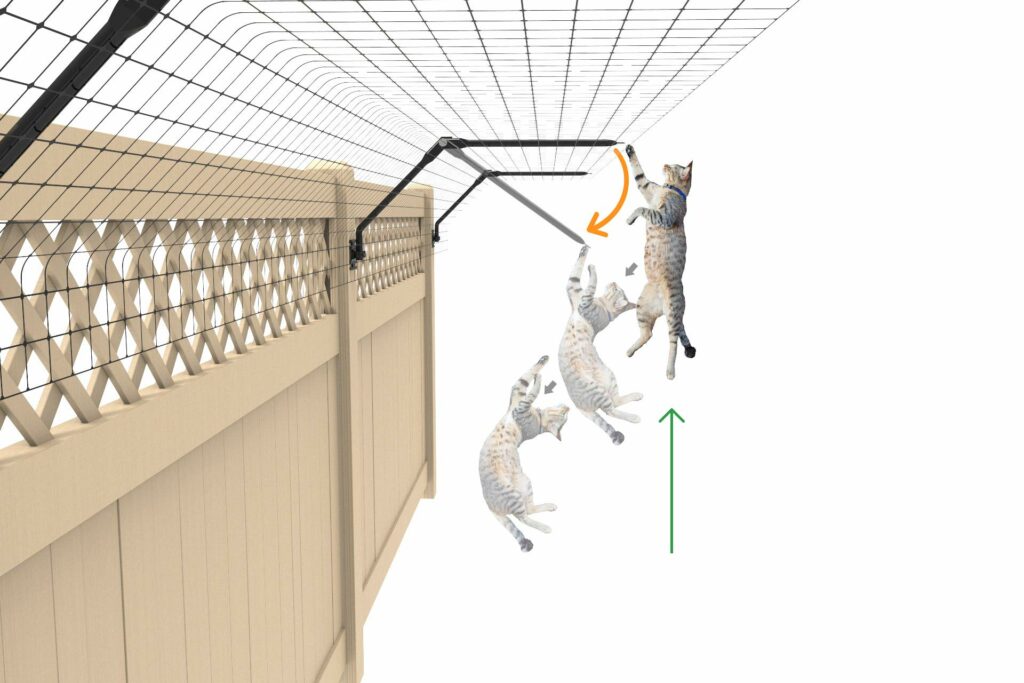
These cat proof fence kits can prove invaluable in the cat containment market and are recommended for fences standing at least 5 feet or higher for optimal efficacy.
Versatile in installation, fence kits claim compatibility with various fence types, including timber, masonry, metal, and vinyl.
Some netting fence conversion systems boast robust construction, utilizing heavy-duty flexible mesh cat fence material, ensuring durability for several years.
However, akin to whole yard cat netting, the primary drawback with cat proof fence kits lies in aesthetics. The structures, extending conspicuously above the fencing line, impart a somewhat “prison-like” appearance.
While prioritising your cat’s safety is paramount, it’s worth considering if the aesthetics of your garden hold significance.
Another potential pitfall lies in the possibility of your outdoor cat being able to jump over the extended arms should they be placed too low or if near to a tree or other off-the-ground garden feature a cat can climb.
If cat fence conversion kits are simply not doing it for you, then let us take a look at a less conspicuous option…
Cat Proof Fence Rollers
Cat proof fence rollers are a simple yet effective solution to keeping your cat safe and secure within your property.
These rollers are typically made of durable materials such as aluminium or PVC and are designed to attach to the top of your existing fencing.
For an example, see here.
They work by spinning freely when a cat tries to climb up the fence and the smooth surface of the rollers makes it difficult for cats to gain traction and climb over.
Cat proof fence rollers not only prevent your cat from escaping, but also stop other animals from entering your property.
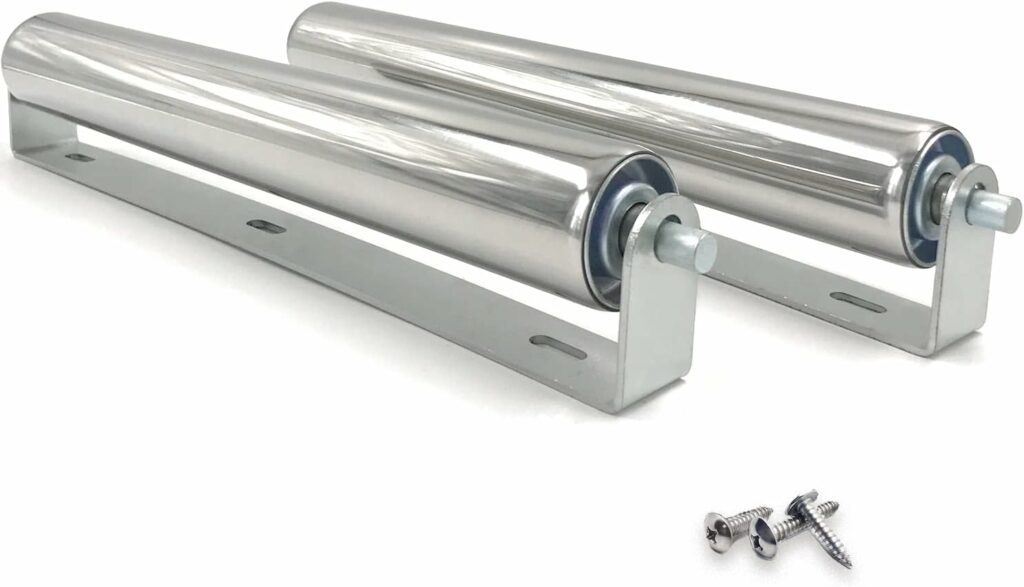
Being easy to install they require minimal maintenance once in place.
They are also weather-resistant, ensuring that they will last for years without needing replacement.
As they sit on top of a fence, you may wish to seek permission from your neighbours before purchasing if fence upkeep is a shared responsibility.
If you don’t want to ‘roll’ with it, maybe paddles will float your boat?
Cat Proof Spinning Paddle Systems
Innovative in the cat containment market, this cat proof fence system is designed to prevent cats from climbing or jumping over fences by creating a spinning barrier that deters them from escaping.
The spinning paddle system consists of a series of rotating paddles that are strategically placed along the top of your fencing in a similar fashion to rollers.
When a cat tries to climb or jump onto the fence, they will encounter these rotating paddles which will spin rapidly and make it impossible for them to gain traction or grip.
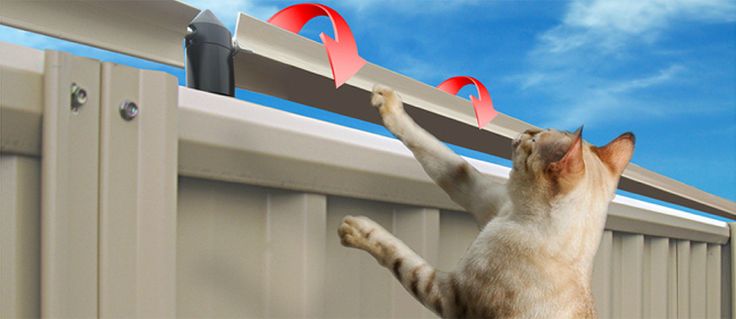
Additionally, the spinning paddles are completely harmless and do not cause any harm to your cat – they simply act as a deterrent to keep them from wandering off.
Cat proof fence spinning paddles do not require specialist tools and can be installed by DIY novices.
Again, as these are in effect, a form of cat proof fence topper, check with neighbours before purchasing if your fence is shared.
Cat Proof Fence Spikes
Cat proof fence spikes, also known as cat deterrent spikes or cat repellent spikes, typically consist of rows of pointed protrusions or spikes that are installed along the top of a fence or wall.
The idea is to create an uncomfortable surface that discourages cats from attempting to climb or access certain areas.
While cat proof fencing spikes are intended to be a humane and non-lethal method of deterring cats, there are concerns about the potential harm this particular cat containment system may cause to your cat and other animals.
Plus they make your yard look ‘evil.’
Having covered ways to cat proof existing fences, let us now delve into free standing alternatives…
Free Standing Cat Fence
A free standing cat fence is a sophisticated and innovative enclosure designed to provide a secure outdoor space for cats.
Unlike traditional outdoor cat fences that may require permanent installation or attachment to existing structures, a free-standing cat fence stands independently, offering flexibility and ease of setup.
Constructed from durable materials, this fencing often feature a mesh design that combines strength with visual transparency, allowing cats to enjoy the surrounding environment while ensuring their safety.
The term “free-standing” implies that the fencing does not rely on external support structures and can be placed in various locations without the need for extensive modifications.
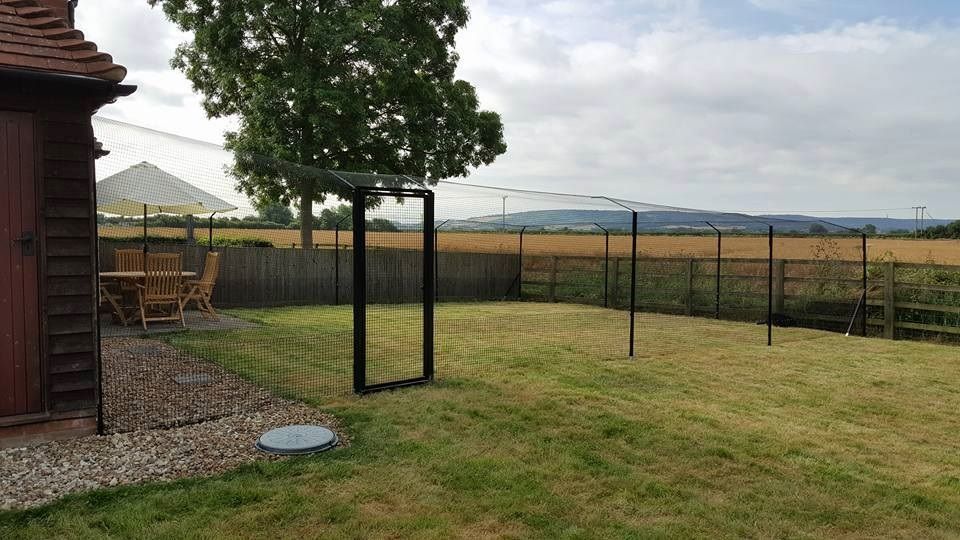
Designs typically include a secure top to prevent cats from climbing over, ensuring a protected space for their recreational activities.
Free-standing outdoor cat fences are a popular choice for cat owners who want to offer their feline companions the benefits of outdoor exploration without compromising safety.
The versatility and aesthetic appeal of these enclosures make them a practical and stylish addition to any outdoor space dedicated to cat enrichment.
A downside is a lack of privacy owing to the see-through nature of the structures, so something to bear in mind if this is important to you.
Similar to free-standing cat fencing but on a smaller scale are so-called “catios”…
Catios and Cat Enclosures
Catios and cat enclosures are an alternative to cat proofing a fence.
These spaces offer a compromise between a cat’s innate desire for exploration and the need for a protected environment.
Catio:
- The term “catio” is a portmanteau of “cat” and “patio.” It refers to an enclosed outdoor space specifically designed for cats.
- Catios can vary in size and complexity, ranging from small window boxes or balconies to larger, purpose-built structures attached to a house.
- Typically made of mesh or wire to provide visibility and ventilation, catios keep cats safe and prevent them from escaping.
- Catios may include shelves, platforms, and climbing structures to enrich the environment and offer various activities for cats.
Cat Enclosure:
- A cat enclosure is a broader term encompassing any secure area designed to confine and protect cats outdoors. This can include catios but extends to other types of enclosure also.
- Cat enclosures may be freestanding or attached to a house, providing a safe boundary for cats to explore.
- These enclosures come in various sizes and designs, accommodating different outdoor spaces and catering to the specific needs of cats and their owners.
- Materials used in cat enclosures include mesh, wire, or other sturdy materials, ensuring durability and visibility.
You can see a range of catios and cat enclosures here.
Both catios and cat enclosures contribute to the physical and mental well-being of cats by providing a secure and stimulating environment, albeit on a smaller scale.

Let’s take a look at some frequently asked questions:
Does Cat Proofing Fencing Work?
Cat-proofing fencing can be effective in certain situations, but its success depends on various factors.
Fencing Design: These can include angled barriers at the top of the fence to prevent climbing, as well as extending fencing underground to prevent digging. The effectiveness of these designs can vary depending on the agility and determination of the cats.
Cat Behaviour: While cat-proof fencing can deter many cats, some may still find ways to bypass the barriers. Understanding the behaviour of the specific cats involved can help in designing more effective barriers.
Environment: If there are nearby trees or structures that cats can use to jump onto the fence, additional measures may be needed to prevent escape.
Maintenance: This may involve checking for any damage or wear and tear that could compromise the integrity of the barriers particularly after extreme weather events
Supervision: Even with cat-proof fencing in place, it’s important to supervise cats when they are outside especially those that are particularly determined or adventurous.
Overall, while cat proofing a fence can be a useful tool for keeping cats safe and contained, it may not be fool proof in all situations. It’s important to assess the specific needs and behaviours of the cats involved and take appropriate measures to ensure their safety and security.
How High Does A Fence Have To Be For A Cat Not To Be Able To Leap Over It?
The height of a fence required to prevent a cat from leaping over it can vary depending on factors such as the breed, age, health, and agility of the cat.
On average, a healthy adult cat can jump up to about 6 feet (1.8 metres) vertically from a standing position, though some particularly agile or motivated cats may be able to jump even higher.
To prevent cats from leaping over a fence, especially if they are determined or adventurous, you may need to consider making the fence significantly taller than the typical jumping height of a cat.
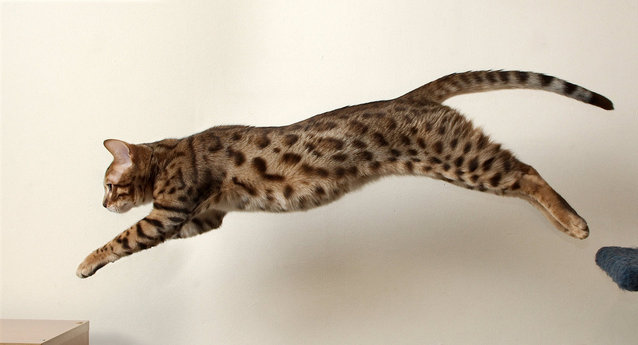
Adding height to the fence or incorporating features such as angled barriers or overhangs can help deter cats from attempting to jump over.
In practical terms, a fence height of at least 7 to 8 feet (2.1 to 2.4 metres) may be effective in deterring most cats from jumping over.
Additionally, it’s essential to consider other factors such as nearby structures or trees that cats could use to gain additional height and potentially bypass the fence.
What If My Cat Keeps Crawling Under The Fence?
If your cat keeps crawling under the fence, there are several measures you can take to prevent this behaviour:
Burying barriers: Install barriers underground along the perimeter of the fence to prevent your cat from digging underneath. This could include burying chicken wire or hardware cloth several inches below the surface.
Extend the fence downward: Extend the height of the fence downward by attaching a mesh skirt or lattice panel to the bottom edge of the fence. Ensure that it extends several inches below ground level to prevent your cat from squeezing underneath.
Create a barrier along the bottom: Place heavy objects or landscaping materials along the bottom edge of the fence to make it difficult for your cat to access the area underneath.
Use deterrents: Apply cat repellent sprays or granules along the perimeter of the fence to discourage your cat from approaching or attempting to crawl underneath.
Supervision and training: Supervise your cat when they are outside and redirect them away from the fence if they show interest in crawling underneath. Additionally, you can train your cat to stay away from the fence using positive reinforcement techniques.
Provide alternative outlets: Ensure that your cat has plenty of mental and physical stimulation indoors to reduce their desire to escape the yard. This could include interactive toys, scratching posts, and designated play areas.
Consider outdoor enclosures: If your cat enjoys spending time outdoors but is prone to escaping under the fence, consider setting up a secure outdoor enclosure or catio (as mentioned above) where they can safely enjoy the outdoors without the risk of escape.
Check for escape routes: Regularly inspect the perimeter of your yard for any gaps, holes, or weak points in the fence that your cat may be exploiting to crawl underneath. Repair or reinforce these areas as needed.
How Do You Keep Your Neighbour’s Cat Out Of Your Yard If You Don’t Want To Install A Fence?
Keeping your neighbour’s cat out of your yard without installing a fence requires a combination of deterrents and strategies to make your yard less appealing to the cat.
Here are some methods you can try:
Physical barriers: Place physical barriers such as chicken wire, mesh netting, or lattice along the perimeter of your yard. These barriers can prevent cats from easily entering your yard.
Scent deterrents: Cats are sensitive to certain scents. You can try spreading citrus peels or coffee grounds around your yard to deter them. Commercially available cat repellent sprays are also an option.
Motion-activated lights: Install motion-activated lights around your yard to make it less appealing for cats to roam around during the night, as they prefer dark areas.
Remove attractions: Cats are often drawn to yards with food sources, hiding spots, or comfortable resting areas. Remove any outdoor food sources, secure trash cans, and trim bushes or shrubs where cats could hide or rest.
Water deterrents: Use a squirt gun or a water hose to spray cats when you see them in your yard. Most cats dislike getting wet and will learn to avoid your yard.
Ultrasonic devices: Install ultrasonic devices that emit high-frequency sounds when cats enter your yard. These sounds are unpleasant to cats but are typically not audible to humans.
Positive reinforcement: If the cat is owned by a neighbour, you can politely talk to them about keeping their cat out of your yard. Offer suggestions or assistance in keeping their cat contained.
Netting: If the cat is accessing your yard by jumping from a nearby structure, consider installing netting or barriers on the structure to prevent access.
Regular yard maintenance: Keep your yard well-maintained, as cats are less likely to enter clean, open spaces.
It’s important to note that these methods may not always be 100% effective, and some trial and error may be necessary.
Additionally, always ensure that any methods used are safe and humane for the cats and other wildlife in your area.
Summary
Cat proofing a fence is a simple and effective way to keep cats safe and secure in their outdoor environment.
By implementing some of the tips and techniques mentioned in this article, you can create a secure space for your cats to explore and roam freely without the fear of them escaping or getting into harm’s way.
Remember, it’s important to regularly inspect and maintain your outdoor cat fence barrier in which ever form it takes, to ensure it remains cat-proofed and provides a safe environment for your beloved pets.
With a little effort and creativity, you can easily create a happy and healthy outdoor space for you and your cats to enjoy.
Further Reading:
Please note, Amazon links on this page are affiliate links from which I’ll receive a small percentage if you purchase at no extra cost to you. It all helps. Thanks.

